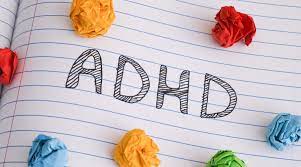
In today’s fast-paced and dynamic work environments, creativity is often hailed as a cornerstone of success. Companies strive to foster environments where innovation thrives, seeking employees who can think outside the box and generate groundbreaking ideas. However, amidst this pursuit of creativity, another aspect of human cognition often goes overlooked: Attention Deficit Hyperactivity Disorder (ADHD). ADHD, characterized by symptoms such as impulsivity, hyperactivity, and difficulty sustaining attention, affects individuals in various aspects of their lives, including the workplace. But what if there’s more to ADHD treatment than just its challenges? What if it could be reframed as a potential asset, particularly in fostering creativity in the workplace? This essay delves into the intersection of ADHD and creativity in professional settings, exploring how embracing neurodiversity can lead to innovative breakthroughs.
Understanding ADHD:
Before delving into the relationship between ADHD and creativity, it’s crucial to grasp the fundamentals of ADHD itself. ADHD is a neurodevelopmental disorder that affects both children and adults. While it’s often associated with difficulties in focusing and impulsivity, individuals with ADHD also exhibit remarkable strengths. These strengths include heightened creativity, a knack for thinking outside the box, and a propensity for generating novel ideas. However, these strengths are frequently overshadowed by the challenges associated with ADHD, leading to misconceptions and underutilization of the unique talents individuals with ADHD possess.
The Link Between ADHD and Creativity
Research has increasingly highlighted the connection between ADHD and creativity. A study published in the Journal of Creative Behavior found that individuals with ADHD demonstrated higher levels of divergent thinking—the ability to generate multiple solutions to a problem—compared to their neurotypical counterparts. This propensity for divergent thinking stems from the inherent difficulty individuals with ADHD have in filtering out irrelevant information, allowing their minds to explore unconventional pathways and connections. Moreover, the restless nature of ADHD often leads individuals to seek novelty and stimulation, fueling their creativity and willingness to take risks.
Harnessing ADHD for Innovation
Instead of viewing ADHD solely through a deficit-based lens, organizations can capitalize on the unique strengths associated with the condition to drive innovation in the workplace. By creating an inclusive environment that embraces neurodiversity, companies can leverage the creativity and fresh perspectives that individuals with ADHD bring to the table. This can involve implementing flexible work arrangements that accommodate the fluctuating attention spans of employees with ADHD, providing alternative communication channels to cater to diverse learning styles, and fostering a culture of collaboration and experimentation where unconventional ideas are encouraged.
Case Studies
Several companies have already recognized the potential of harnessing ADHD for innovation and have implemented strategies to accommodate neurodiversity employees. For instance, software giant Microsoft has established an Autism Hiring Program aimed at recruiting individuals on the autism spectrum, recognizing the unique talents they bring to roles that require attention to detail and pattern recognition. Similarly, accounting firm EY (Ernst & Young) has launched a Neurodiversity Centers of Excellence initiative, which focuses on hiring individuals with conditions such as ADHD and autism and providing them with the support and accommodations they need to thrive in the workplace.
Challenges and Solutions
Despite the benefits of embracing ADHD in the workplace, challenges remain in effectively integrating neurodiversity individuals into existing organizational structures. These challenges include stigma and misconceptions surrounding ADHD involve lack of awareness among employers about the strengths associated with the condition, and the need for tailored accommodations to support individuals with ADHD. However, by raising awareness, providing education and training for managers and colleagues, and implementing inclusive policies and practices, companies can overcome these barriers and create environments where neurodiversity is celebrated and valued.
Conclusion
ADHD and creativity are intricately intertwined, with individuals with ADHD often possessing unique strengths that can drive innovation and problem-solving in the workplace. By reframing ADHD as a potential asset rather than a liability, organizations can unlock the full potential of their neurodiversity workforce and foster a culture of creativity and inclusion. Embracing neurodiversity isn’t just about accommodating differences; it’s about recognizing the inherent value that each individual brings to the table and harnessing that diversity to drive success in today’s rapidly evolving business landscape.
